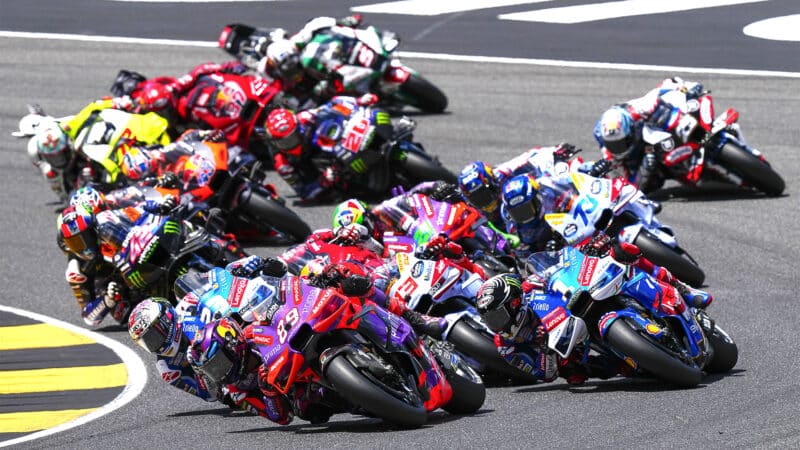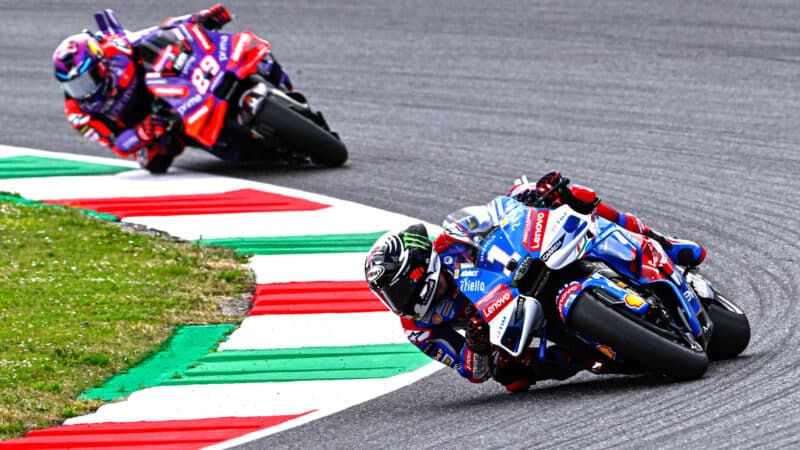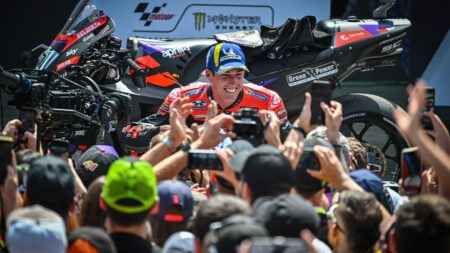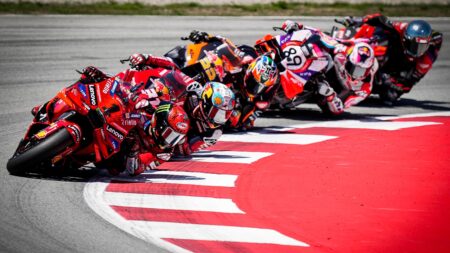Bagnaia’s team-mate Enea Bastianini might’ve been in the victory mix if he hadn’t been asleep in fourth place for much of the race. He admitted afterwards that he only came to his senses when Márquez came past with six laps to go. That wake-up call took him past Márquez on the penultimate lap, past Martin at the final corner and across the finish line only 0.799 seconds behind the winner.
Bagnaia’s race may have been a masterpiece and his pace stunning, but many who watched Mugello struggled to stay awake, like Bastianini. Apart from his first two corners and Bastianini’s successful duels with Márquez and Martin, the race was a follow-my-leader bore, which would’ve seemed very familiar to Liberty Media’s Formula 1 boss Stefano Domenicali, who was spectating at Mugello.
Although the previous four GPs – COTA, Jerez, Le Mans and Catalunya – were hugely entertaining, MotoGP has had plenty of dull races in recent seasons, with riders unable to get their claws into riders in front. This blog has explored the various reasons behind this phenomenon on several occasions – for example, big aero, ride-height devices and front-tyre pressure, which has been exacerbated by the extra stress placed on the tyre by big aero and so on.
Dorna and MotoGP have addressed some of these issues in their new technical regulations, published recently and due to take effect in 2027. But there’s one issue that can be solved much sooner than that: the front tyre.

Bagnaia and Bastianini – wearing blue in honour of Italy’s football team – celebrate their first-ever factory Ducati one-two
MotoGP/Dorna
Martin stated after Sunday’s race that high front-tyre pressure is often the reason riders can’t attack each other, because the heat from the bike in front overheats the front tyre, increasing its pressure, which changes its profile, shrinks the contact patch and reduces grip.
“We are so on the limit with front temperature during the last few years… so when you are three-tenths or closer to the rider in front it’s impossible to get even closer,” said the Spaniard.
Everyone in MotoGP knows that Michelin’s front slick isn’t as good as its rear slick, which is why the French company has been planning to introduce a new front for several years. The original plan was 2021, but that intro was delayed until 2022, due to MotoGP’s Covid-related technical freezes.
It is now 2024. Michelin is currently working hard on a new front for next season, which will be manufactured by the same top-secret C3M process that the company has used to make its rear slicks for some years.
C3M basically 3D prints every tyre. This is the technology used to create the famous ‘overnight’ tyres that played a big part in MotoGP before the championship switched to spec tyres in 2009. Using the C3M machine will allow a stiffer front casing, which will be less sensitive to pressure growth.
The 2025 front was first used by some MotoGP riders during pre-season testing and is available for use in today’s Mugello tests.
But after yesterday’s race, Michelin revealed that the tyre may not be ready until 2026.
Why? Because it’s not being tested enough. This isn’t Michelin’s fault. If the company gives its all-new front tyre to riders, they mostly won’t want to test it, because why would riders allocate valuable testing time to evaluating something they won’t race until next season when they’ve got 14 race weekends ahead with the current front?
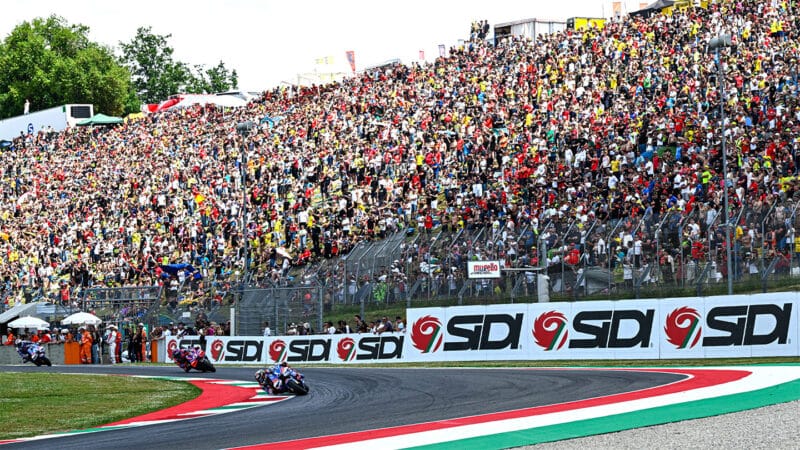
Bagnaia leads Martin and Bastianini through Casanova – the Mugello crowd was the biggest since the end of the Rossi era
MotoGP/Dorna
Motorcycle front tyres are tricky things. F1 lap times come from stamping on the accelerator and stamping on the brakes, because F1 cars have four huge tyre contact patches. Much of a motorcycle’s lap time comes from the front tyre: straight-line braking, trail braking with lean angle, corner entry and mid-corner speed, which also affects corner-exit speed.
And all this through a tiny contact patch, which is constantly ‘talking’ to the rider, telling him how close he is to the limit. When the rider feels the tyre squirming or crabbing across the asphalt he knows he’s on that knife edge between lap-record pace and crashing.
Therefore front-tyre performance is all about feel. And the quality of that feel either gives the rider the confidence to attack corners or takes it away.

